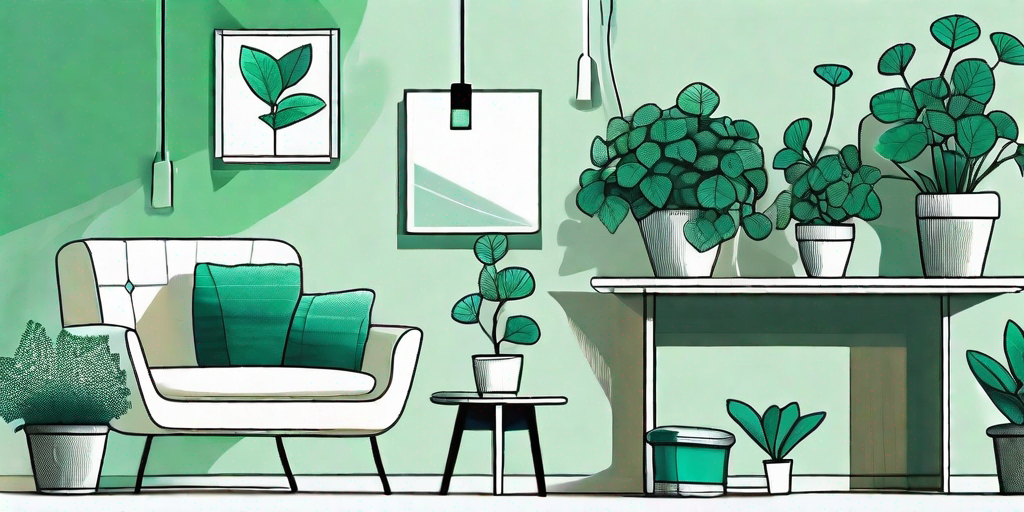
Looking to add a touch of green to your living space? Or perhaps you're a self-proclaimed 'plant parent' looking to expand your leafy brood? Whatever your motivation, the Swedish Ivy is a fantastic choice. This cheeky little plant, also known as Plectranthus australis, is not only a beauty to behold but also a breeze to care for. So, buckle up, and let's dive into the world of Swedish Ivy care!
Understanding Your Swedish Ivy
Before we delve into the nitty-gritty of caring for your Swedish Ivy, let's take a moment to appreciate its charm. This plant, despite its name, is not actually from Sweden. It's originally from Australia and the Pacific Islands. But hey, we're not here to judge its identity crisis, are we?
Swedish Ivy is a fast-growing, evergreen perennial that is loved for its beautiful cascading vines, rounded leaves, and delicate white or lavender flowers. It's a popular choice for hanging baskets, but it's equally at home in a pot on your windowsill or desk. Now that we've got the introductions out of the way, let's get down to business.
How to Care for Your Swedish Ivy
Lighting Conditions
Swedish Ivy is a bit of a diva when it comes to light. It prefers bright, indirect light. So, a spot near a north or east-facing window would be ideal. However, it's also pretty forgiving and can tolerate lower light conditions. Just don't stick it in a dark corner and forget about it, okay?
Too much direct sunlight can cause the leaves to scorch, while too little light can cause the plant to become leggy. So, you'll need to strike a balance. If you notice your plant's leaves turning yellow or the stems stretching out, it's time to adjust the lighting conditions.
Watering Needs
When it comes to watering, your Swedish Ivy doesn't like to be left high and dry. It prefers consistently moist soil. However, it's also not a fan of waterlogged roots. So, you'll need to ensure good drainage. A good rule of thumb is to water the plant when the top inch of soil feels dry to the touch.
Overwatering can lead to root rot, a common plant killer. If the leaves start to wilt or turn yellow, you may be overdoing it on the water. On the other hand, if the leaves start to shrivel or turn brown, your plant may be thirsty. Listen to your plant, it's trying to communicate with you!
Feeding and Fertilizing
Like any living thing, your Swedish Ivy needs food to grow. A balanced, water-soluble fertilizer applied every two weeks during the growing season (spring and summer) should do the trick. During the cooler months, you can cut back on the feeding to once a month.
Remember, more is not always better when it comes to fertilizer. Over-fertilizing can lead to salt buildup in the soil, which can damage the roots. If you notice the leaves turning brown or falling off, it might be a sign of over-fertilization. In this case, flush the soil with water to remove excess salts.
Common Problems and How to Solve Them
Pests
Swedish Ivy is generally pest-resistant, but it can sometimes attract mealybugs, spider mites, and aphids. If you notice small, discolored spots on the leaves or a sticky residue on the plant or surrounding surfaces, you may have a pest problem.
The good news is, most pests can be controlled with a mild insecticidal soap or neem oil. Simply spray the plant thoroughly, making sure to get the undersides of the leaves, and repeat as necessary. If the infestation is severe, you may need to prune the affected areas.
Disease
Root rot is the most common disease affecting Swedish Ivy, and it's usually a result of overwatering. If you notice the leaves turning yellow or the plant wilting despite regular watering, root rot could be the culprit.
The best course of action is to repot the plant in fresh, well-draining soil. Make sure to remove any rotten roots before repotting. Going forward, be mindful of your watering habits to prevent a recurrence of the problem.
FAQs
- Is Swedish Ivy toxic to pets?
Swedish Ivy is non-toxic to cats and dogs. However, it's always a good idea to keep plants out of reach of curious pets to prevent any accidental ingestion or damage to the plant.
- Can Swedish Ivy grow outdoors?
Yes, Swedish Ivy can grow outdoors in USDA hardiness zones 10 and 11. However, it's generally grown as a houseplant in most climates.
- How often should I repot my Swedish Ivy?
Swedish Ivy is a fast grower and may need to be repotted every year or two. Signs that your plant needs a new home include roots growing out of the drainage holes, slow growth, or the plant becoming top-heavy.
Conclusion
There you have it, folks! Everything you need to know to keep your Swedish Ivy happy and healthy. With its lush foliage and easy-care nature, this plant is sure to bring a touch of greenery and joy to your space. So, what are you waiting for? Go get yourself a Swedish Ivy and start greening up your space!
Remember, the key to successful plant parenting is understanding your plant's needs and responding accordingly. With a little bit of love and care, your Swedish Ivy will reward you with a cascade of beautiful, green leaves. Happy planting!















